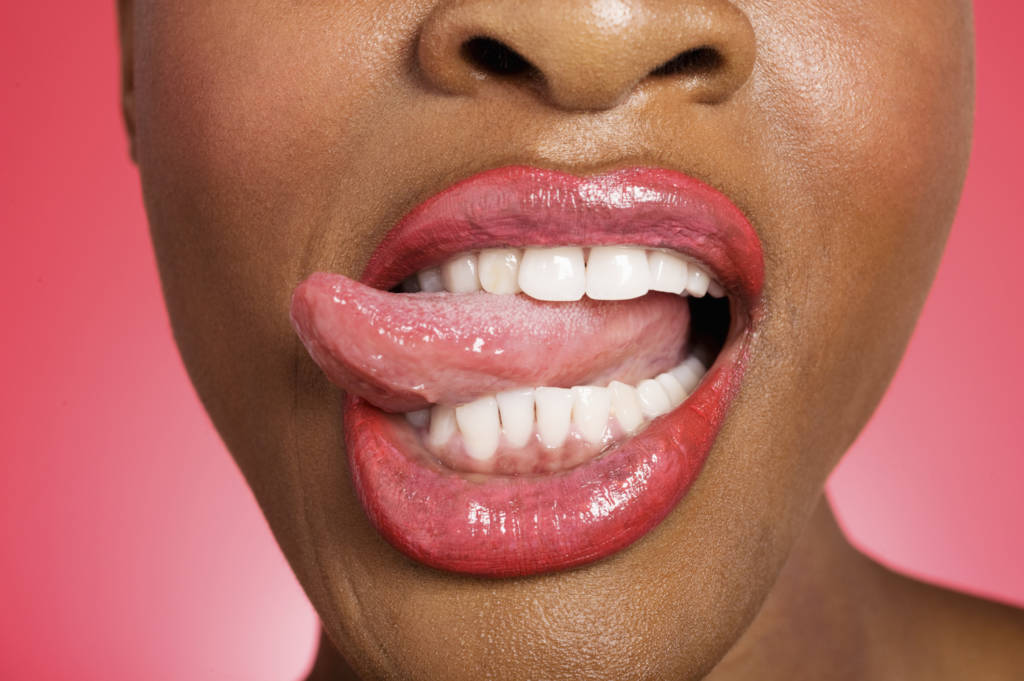
Sticking your tongue out at the doctor to say "Ahhh" seems like a routine thing to do when you go to the doctors office. Oftentimes, it often seems pointless because the doctor usually takes a look and goes right ahead with the next part of the examination. But little do you know, the tongue itself can reveal a lot about your health without you saying a word, especially if it changes colors.
Here's what you need to know if your tongue changes any of these colors:
White Coating / White Spots
A white tongue, or white spots on your tongue, could be an indication of:
Oral thrush: a yeast infection that develops inside the mouth. It appears as white patches that are often the consistency of cottage cheese. “Oral thrush is most commonly seen in infants and the elderly, especially denture wearers, or in people with weakened immune systems,” says Dr. Allan. “People with diabetes and those who are taking inhaled steroids for asthma or lung disease can also get it. Oral thrush is more likely to occur after you’ve taken antibiotics.”
MUST READ: Diseases You Can Get Just From Kissing
Leukoplakia: a condition in which the cells in the mouth grow excessively, which leads to white patches on the tongue and inside the mouth. Leukoplakia can develop when the tongue has been irritated. It’s often seen in people who use tobacco products. Leukoplakia can be a precursor to cancer, but isn’t inherently dangerous by itself. If you see what you think could be leukoplakia, contact your dentist for an evaluation.
Oral lichen planus: a network of raised white lines on your tongue that look similar to lace. We don’t always know what causes this condition, but it usually resolves on its own.
Red Tongue
Vitamin deficiency: Folic acid and vitamin B-12 deficiencies may cause your tongue to take on a reddish appearance.
Geographic tongue: This condition causes a map-like pattern of reddish spots to develop on the surface of your tongue. Different shades of red patches can have a white border around them, and their location on your tongue may shift over time, but geographic tongue is usually harmless.
Scarlet fever: an infection that causes the tongue to have a strawberry-like (red and bumpy) appearance.
Kawasaki disease: a condition that can also cause the tongue to have a strawberry-like appearance. It is seen in children under the age of 5 and is accompanied by a high fever. It demands immediate medical evaluation.
Black Tongue and/or Hairy
Much like hair, the papillae on your tongue grow throughout your lifetime. In some people, they become...
... excessively long, which makes them more likely to harbor bacteria.
When these bacteria grow, they may look dark or black, and the overgrown papillae can appear hair-like.
Fortunately, this condition is not common and is typically not serious. It’s most likely to occur in people who don’t practice good dental hygiene.
Those with diabetes and taking antibiotics or receiving chemotherapy may also develop a black hairy tongue.
Sore/Bumpy Tongue
Painful bumps on your tongue can be due to:
Trauma: Accidentally biting your tongue or scalding it on something straight out of the oven can result in a sore tongue until the damage heals. Grinding or clenching your teeth can also irritate the sides of your tongue and cause it to become painful.
Smoking: Smoking irritates your tongue, which can cause soreness.
Canker sores: Mouth ulcers. Many people develop canker sores on the tongue at one time or another. The cause is unknown, but stress is believed to be a factor. Canker sores normally heal without treatment within a week or two.
Oral cancer: A lump or sore on your tongue that doesn’t go away within two weeks could be an indication of oral cancer. Many oral cancers don’t hurt in the early stages, so don’t assume a lack of pain means nothing is wrong.








